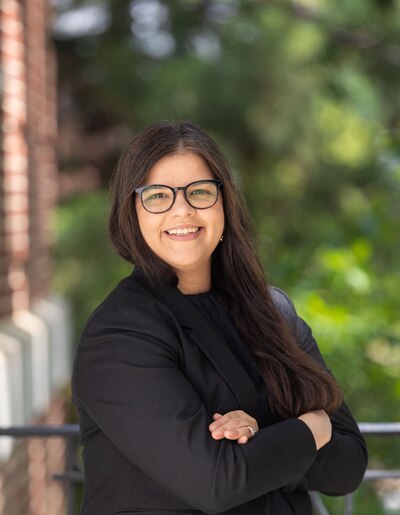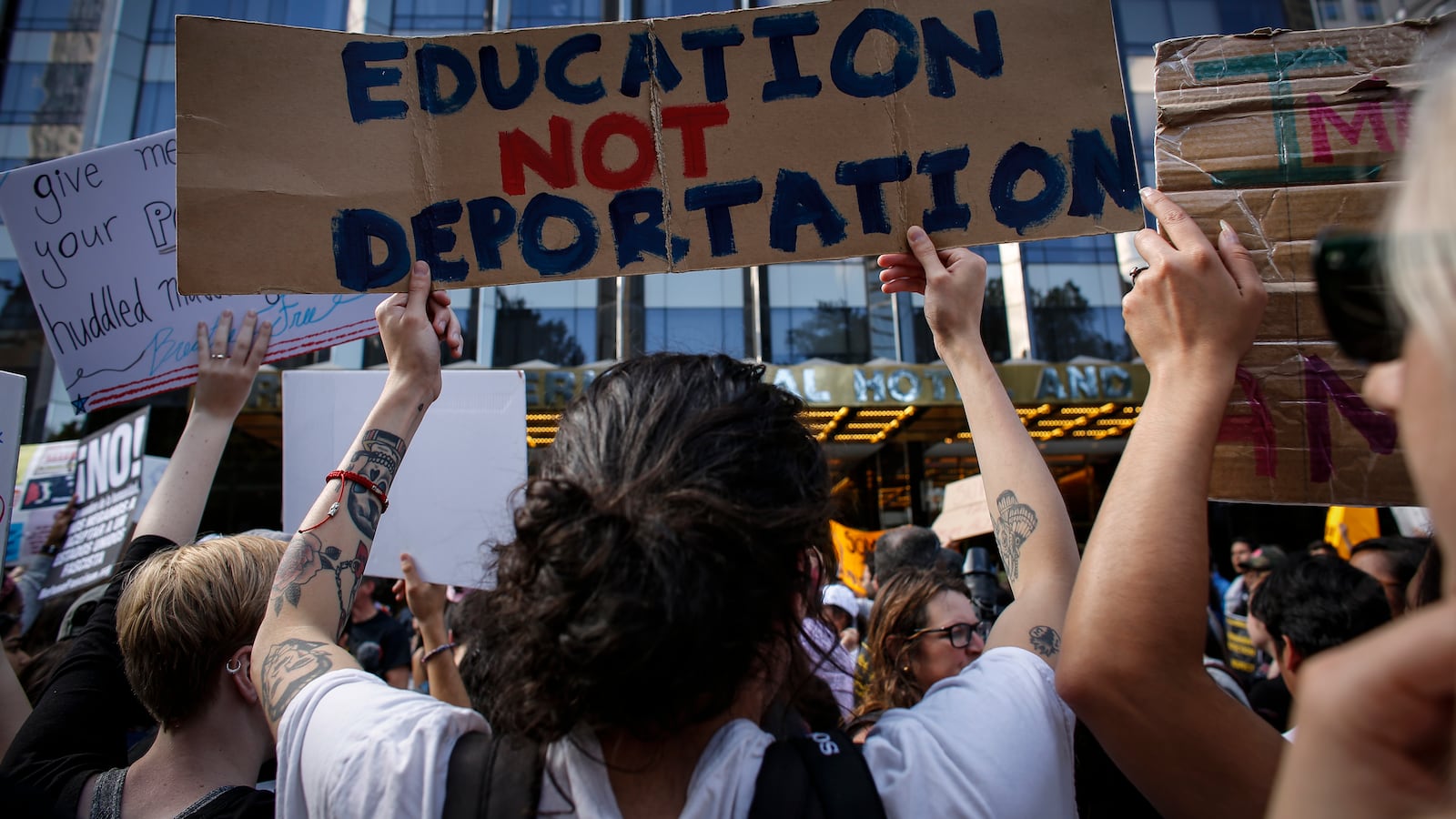When I hear about President Joe Biden’s recent action to halt asylum from the U.S. Southern border, when I hear about efforts to deny undocumented students a free public education, and when I hear former President Donald Trump using hyperbolic, criminalizing anti-immigrant rhetoric from the presidential debate stage, I am reminded of the faces and voices of young people I have encountered who are or were undocumented or from mixed immigration status families.
For the past 15 years, I have worked as a teacher, coach, and then ethnographer and education policy researcher to try to understand how newcomer immigrant students experience their schools and communities. In my research roles, I have interviewed hundreds of immigrant youth, and I have learned of their everyday realities, their enduring hope, and their struggle for belonging in the U.S.

First, I taught English as a second language in New York City public schools and worked with language learners as well as foreign- and native-born students from immigrant families. I moved to Chicago in 2009 to teach multilingual learners and to start my Ph.D. in Educational Policy Studies.
My school in Chicago, like many U.S. public schools, was receiving dozens of newcomer students weekly. Many arrived with limited English or had experienced traumatic migration experiences, such as family separation or being held in detention centers for hundreds of days. One student that I interviewed for my research told me that her family had been caught as they crossed into the U.S. and sent to jail for three days. “My mom was starving,” she told me. “So was I, but I got used to eating apples they would give us.”
I focused on getting basic needs met, as many educators do. I brought food to school. I took kids to the grocery store and taught them introductory English phrases. I remember a student saying to me, “You hold the words for us in your hands,” referring to my efforts to translate for them. And yet, we built a home in our ESL classroom, and I witnessed how it was possible for my immigrant students to feel a sense of belonging despite having their worlds ripped apart due to violence, political strife, poverty, and oppressive governments.
Schools are often the major institutions with which immigrant youth and their families interact; it is, for many, their one safe place.
It’s unconstitutional, the U.S. Supreme Court has ruled, to deny children an education because of their immigration status. Yet over the years, that 1982 ruling, Plyler v. Doe, has been poked and prodded by states, politicians, and think tanks in attempts to undo the safety net that education provides. Threatening these protections puts millions of children at risk.
As I transitioned from teacher to researcher, and now with a decade of research behind me, I have different levels of understanding and proximity to the issue. Instead of focusing on the fabricated immigration “crisis” and the “drain” on resources, we must shift the discourse to center young people’s experiences.
In a study about undocumented youth experiences of racial discrimination and belonging, I observed young people deal with hostile 2016 campaign rhetoric, racial profiling, bodily threats, family separation, the deportation of friends and family members, legal violence, and inequities in educational access. Some shared with me how they live in fear of immigration officials “knocking at their door.” They told me how community members and politicians “do not know what to do with them” and “take away their rights” yet recruit undocumented labor for ”jobs that powerful white people do not want to do.”
While news outlets and presidential candidates painted a picture of “a crisis” at the border with many “bad hombres,” I listened to stories of migration from young people like Juan, a high school student I spoke to for my research. (The names of the students in this piece have been changed to protect their privacy.) He told me that he “felt the world on top of him” because the fear and uncertainty about his immigration status weighed heavily on him. Juan described his desire for “education and a better life” in the U.S. despite the difficulty he faced in crossing the border.
Then there was Pablo. During his four trips to the United States, three of them unsuccessful, Pablo, a high school student in my research, witnessed a man “falling into a hole” to escape border patrol, crossed the Rio Grande by foot, saw a man die, and was himself taken into ICE custody. He described a particularly chilling scene when he was discovered by authorities:
“I just looked and I didn’t move, it didn’t matter … I just stayed there sitting until immigration came and threw me on the ground and put the ties around my legs and hands and then I arrived at, we call them the ‘coolers,’ where immigration is, they have the rooms cold.”
Serena, another young person I spent time with during a research study that ran from 2016 to 2021, migrated from Brazil to the U.S. with her mother by bus and foot and was held in detention without food or water before being released. Many students told me that it was healing to share these experiences, and I share my research to educate policymakers and practitioners in order to better serve these young people.
Evidence from my field research shows that children as young as 11 or 12 are enduring harsh migration journeys. Upon crossing the border, they face abysmal conditions in detention facilities, long waits, miseducation, and uncertainty.
A 12-year-old student, Alejandro, shared with me that his family crossed the U.S. border multiple times and were unsuccessful, often going to sleep “somewhere” and “hungry.” Arriving in the U.S., he and his family live in constant fear of deportation. The precarity of the situation weighs on young people.
The political rhetoric and recent changes to asylum policies seem like attempts to appease voters. Meanwhile, our immigration system has long been broken — and there’s been little political will to fix it. Unraveling Plyler would make things even worse by undoing decades of precedent and threatening the safety of immigrant children and their families.
In my current research, I have surveyed over 1,300 Latino students in two public school districts in the Mid-Atlantic, many with a foreign-born parent and many who are newcomers themselves and speak languages other than English. I have examined differences across middle and high schoolers, and differences between white and nonwhite experiences of belonging. Latino/x and multiracial high school students reported a lack of connection to social activities and relationships outside of school. I have also found that high school students who spoke English as a second language struggled to belong in school and after-school settings.
Immigrant young people continue to feel unheard and disrespected in their local communities and grapple with the uncertainty of their or their parents’ immigration status. Educators, including teachers and social workers I studied, explained how important it is to ”hear their stories” and to understand the effects of immigration policies.
As I continue to highlight the factors that contribute to student belonging, I hope that policymakers and school districts will incorporate the voices of young people into their plans to create and maintain positive, safe school environments. It’s up to educators to develop inclusive school climates that affirm cultures, identities, and languages; to cultivate trusting and supportive relationships between teachers and students; to provide trauma-informed care training for all staff and educators; and to foster collective leadership so that everyone in the school is working together to serve students. It’s vital work because belonging is essential for immigrant youths’ well-being and their educational and social mobility.
Sophia Rodriguez, Ph.D. (@SoRoPhD), is an associate professor of educational policy studies at New York University’s Steinhardt School of Culture, Education, and Human Development. She is also a first-generation college student and child of an immigrant from Latin America, which drives her advocacy work and quest for equitable policies for immigrant youth and their families. Her research investigates how community-school partnerships and educators promote racial equity for immigrant youth; her research has appeared in academic journals as well as in the Washington Post, Education Week, and the Conversation.



